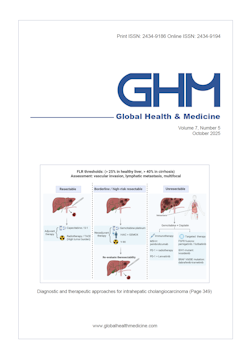Global Health & Medicine 2024;6(4):225-235.
Employment status of older nursing staff aged 55 years and older in care facilities: A nationwide cross-sectional study in Japan
Furukawa A, Kashiwagi M, Morioka N
An aging nursing workforce requires addressing shortages due to retirement. This nationwide descriptive cross-sectional study in Japan clarified the employment status of older nursing staff aged ≥ 55 years by facility type during January–March 2022. Questionnaires were sent to 8,000 nursing directors, with 1,658 valid responses (response rate: 20.7%). Descriptive statistics and Kruskal–Wallis or χ2 tests analyzed inter-facility differences. A violin plot depicted the proportion of older nursing staff across facilities by age group, and generalized estimating equation (GEE) models examined associated factors at the facility level. Older nursing staff's distribution differed significantly across age groups (p < 0.01), from 0% to 100% within the same facility type. Some facilities had high percentages of staff working beyond retirement age. GEE results showed higher percentages of full-time employees and nurses were negatively associated with the percentage of older nursing staff across most facility types (p < 0.05). For those aged ≥ 65 years, the total population was positively associated with employment in bedded clinics (coef. = 0.07, 95% CI: 0.01 to 0.14, p = 0.03), but negatively associated with the total population (coef. = -0.06, 95% CI: -0.10 to -0.01, p = 0.02) and percentage of the population aged ≥ 65 (coef. = -0.76, 95% CI: -1.43 to -0.08, p = 0.03) in long-term care insurance facilities. Working conditions and environments should be improvement to potentially retain older nursing staff. Job seekers should be matched with managers' needs in facilities with a higher proportion of older nursing staff to ensure a sustainable workforce.
DOI: 10.35772/ghm.2024.01026







